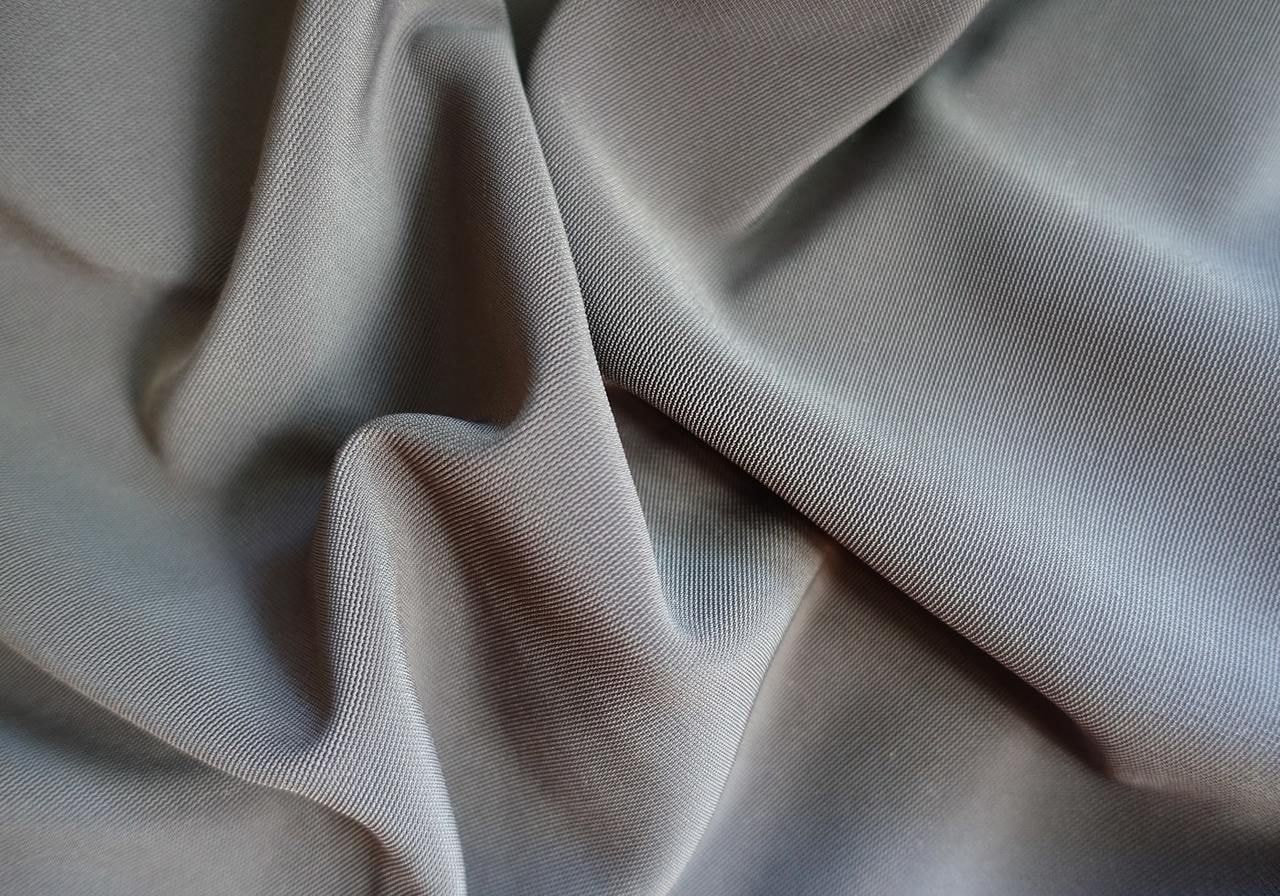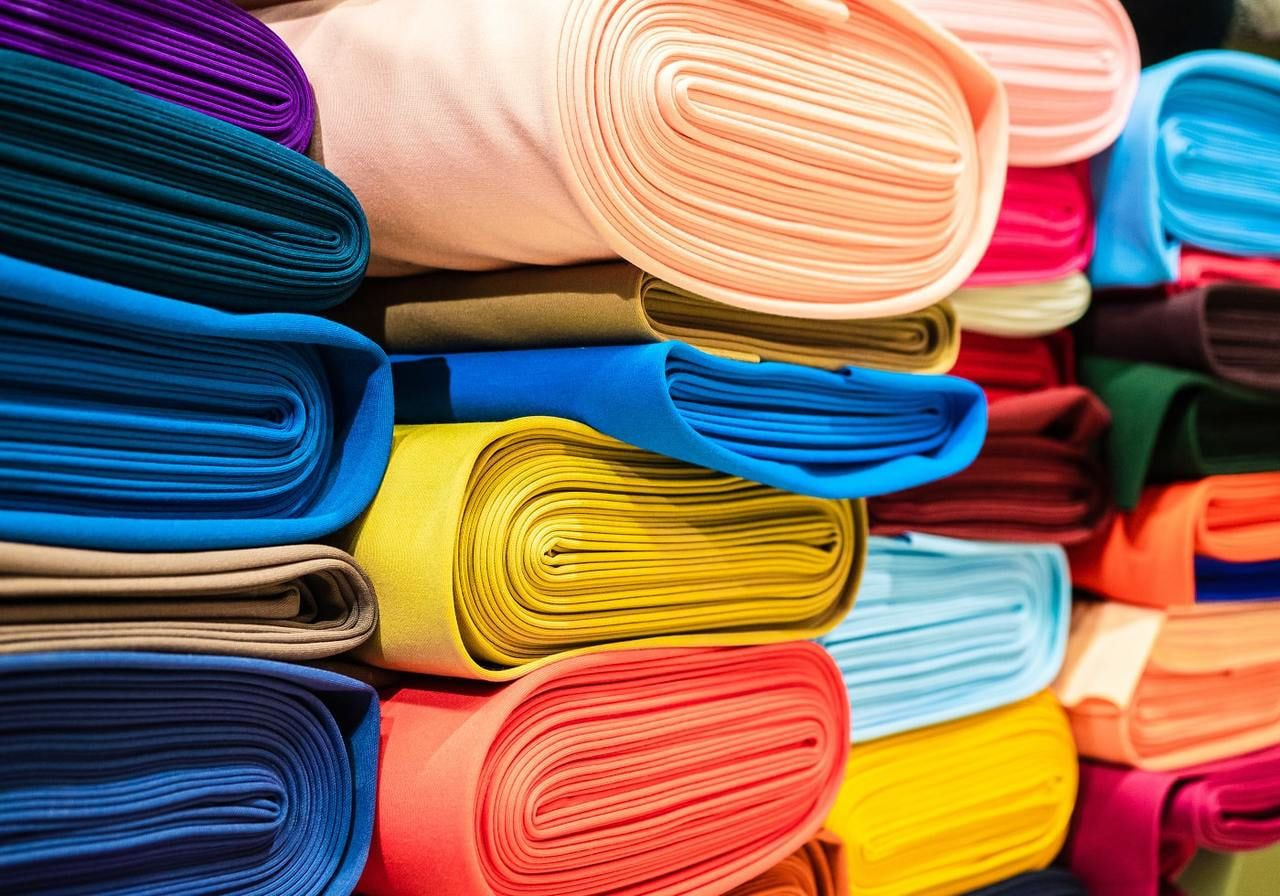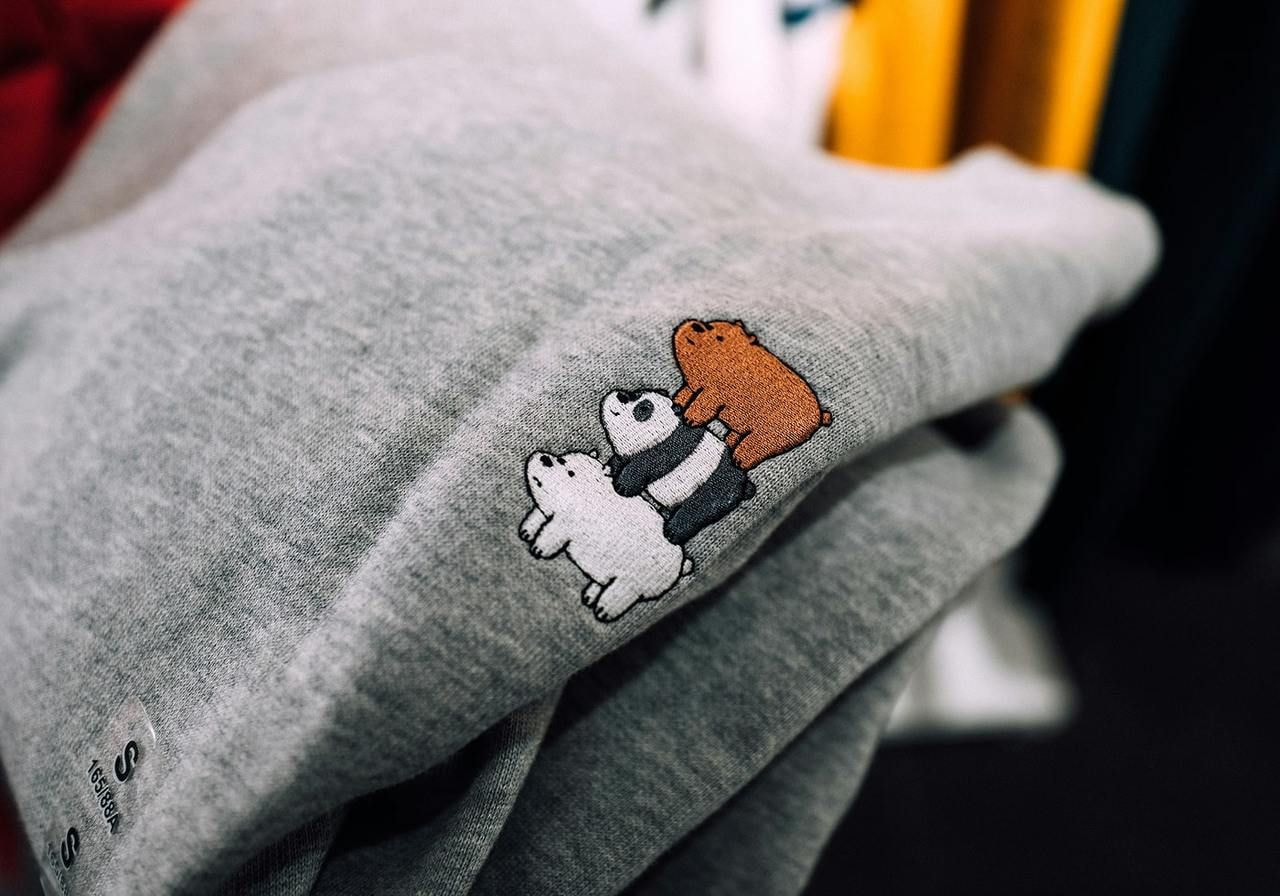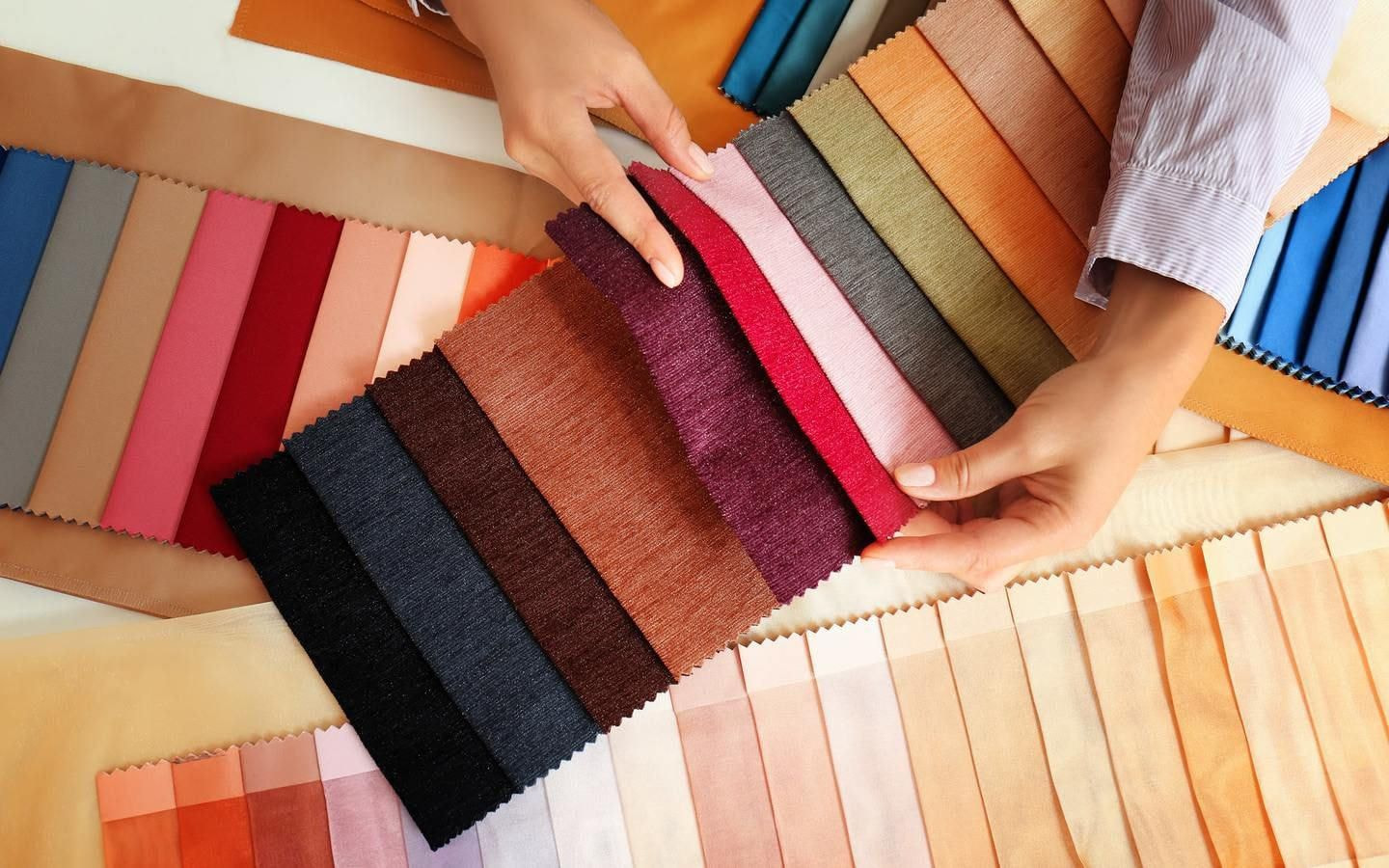Table of contents
Starting a clothing brand? You’ve nailed the designs, and now it’s time to choose the fabric. Beyond cost, the material you pick affects how your final products feel, wear, and sell.
Whether you're building a streetwear label, a cozy loungewear line, or diving into print-on-demand, choosing between polyester vs. cotton impacts the customer experience and how buyers perceive your brand.
So, which is better—cotton, polyester, or a blend of both? Let’s break down the pros, cons, and real-world use cases to help you pick the right fit for your store.


Polyester vs. cotton: Quick overview
Choosing between polyester vs. cotton depends on your brand’s goals—whether that’s cost-effectiveness, comfort, print quality, or sustainability.
Both cotton and polyester have their strengths and trade-offs, and understanding these differences can help you pick the best fit for your designs and customers.
If you're new to the textile world, here's a side-by-side comparison to help you pick:
|
Cotton |
Polyester |
|
|
Cost |
Slightly more expensive |
Typically more affordable |
|
Comfort |
Soft, breathable, gentle on skin |
Less breathable and has a sleek, synthetic feel |
|
Durability |
Durable but prone to shrinking and signs of wear over time |
Highly durable, resistant to shrinking |
|
Breathability |
Excellent—natural fibre allows airflow and absorbs sweat |
Lower—can trap heat and moisture |
|
Sustainability |
Biodegradable but water- and resource-intensive to produce |
Synthetic and non-biodegradable, often made from recycled plastics |
|
Print compatibility |
Great for DTG and screen printing |
Excellent for sublimation printing |
|
Moisture control |
Absorbs moisture, takes longer to dry, less likely to retain odors |
Moisture-wicking, quick-drying, can trap odors over time |
|
Wrinkle resistance |
Wrinkles easily |
Wrinkle resistant |
|
Shrinkage |
Prone to shrinkage from washing |
Resistant to shrinking |
|
Drying time |
Longer drying time |
Dries quickly |
|
Hypoallergenic |
Hypoallergenic, suitable for sensitive skin |
Some wearers may be sensitive to the synthetic fibers |
|
Feel |
Soft and comfortable, especially with ring-spun cotton |
May feel rougher or synthetic unless blended with natural fibers |
What is polyester?

Made from petroleum-based products, polyester is a type of synthetic fiber. It has become a staple in the apparel industry thanks to its durability and resilience.
Some consumers prefer polyester fabrics over cotton for garments like sportswear due to their wrinkle resistance and durability, withstanding frequent washing without fading.
Today, many eco-conscious brands also use recycled polyester, offering the same benefits as regular polyester while being more environmentally friendly.
How is polyester made?
Polyester fibers are made by refining petroleum to extract chemicals like ethylene, which are combined through polymerization to form long, plastic-like chains.
These chains are melted, spun into long threads, and woven into polyester fabric. The result is a durable material commonly used in fashion, home textiles, and industrial applications.
Today, many manufacturers blend cotton and polyester fibers to produce fabrics that combine the strength of synthetic materials with the soft feel of natural fibers.
While blends are common, pure polyester remains popular for its resistance to shrinking and stretching, even with frequent washing.
What is cotton?

Cotton is one of the most widely used natural fibers, prized for its breathability and comfort. A staple in the textile industry, cotton fabric is a top choice for everyday clothing and home linens, thanks to its ability to absorb moisture and keep you cool.
Sourced from the cotton plant, cotton fibers are rich in cellulose, giving the fabric its soft feel. It's especially popular for those with sensitive skin.
However, not all cotton sheets are made equal. Their quality depends on several factors, including thread count, fiber type, and how the fabric is woven.
Premium varieties, such as Egyptian or Sea Island cotton, are especially known for their supple feel and long-lasting durability. They can remain in great condition for up to a decade with proper care.
How is cotton made?
Cotton fabric starts with harvesting bolls from the cotton plant. The cotton fibers are separated from seeds through ginning, then cleaned, spun into yarn, and woven into fabric.
While the production of cotton has become more efficient over time, the core process remains rooted in tradition.
To enhance durability and performance, cotton is also often blended with polyester fibers.
Polyester vs. cotton for printing
If you’re starting a clothing store, understanding how well polyester and cotton perform when it comes to printing is crucial.
Choosing the right fabric is key to achieving high-quality, long-lasting prints. Whether you're using DTG, sublimation, or embroidery, cotton and polyester each have their strengths.
DTG printing
Cotton fabric is the best choice for direct-to-garment (DTG) printing. Its natural fibers absorb water-based inks easily, resulting in vibrant, high-quality prints with great detail.
Polyester fabric performs poorly with DTG because the ink doesn’t bond well with synthetic fibers, leading to faded or uneven prints.
Popular 100% cotton products available at Printful include:
Sublimation printing
When it comes to all-over prints, polyester fibers win. This method requires a synthetic fabric for the dye to bond permanently during heat transfer.
Pure cotton fabric and polyester-cotton blends don’t work well here. The dye won’t stick effectively to the natural fibers, causing prints to appear dull or wash out quickly.
Popular 100% polyester products available at Printful include:
Embroidery
Both cotton and polyester fabrics handle embroidery well. Cotton fabric offers a stable, soft surface that holds stitches neatly.

Polyester garments may shift slightly under the needle due to their smoother texture, but high-quality polyester clothing is still a solid choice for embroidered designs.
Durability after wash
Polyester garments are known for their high durability, retaining colour and shape after repeated washing. They’re wrinkle-resistant and less likely to shrink.
In contrast, cotton fabric may fade, shrink, or wrinkle over time. However, using high-quality cotton and maintaining proper care will help preserve prints fairly well.
Learn more:
Color Matching Guide for Print-on-Demand Products
Polyester vs. Cotton Shirts—Pros, Cons, and Printing Options


Blended fabrics: A middle ground
Blends are created when two or more different kinds of fibers are combined to create a new type of textile with unique properties.
The cotton and polyester blend is designed to improve texture, durability, and comfort, while also helping reduce production costs.
While there are hundreds of fabric blends available in the market, here are the most popular cotton-polyester blends for printed apparel.
Cotton-polyester blends (65/35 and 50/50)
If you can’t decide between polyester fabric vs. cotton, this is a versatile option used to make everything from bedding to shirts. This blend is easier to wash and dry than pure natural fabrics because polyester doesn’t shrink or change shape like cotton.
And thanks to the cotton component in the blend, garments made from cotton-polyester blends are more breathable than pure polyester products.
The best part is that this blend makes an excellent canvas for bright, colorful designs.
Popular cotton-polyester products available at Printful:
Polyester-cotton-rayon blends (50/25/25)
This popular tri-blend fabric mixes polyester, cotton, and rayon to create a super soft, lightweight, and slightly stretchy material.
It’s known for its cozy feel and is a go-to for relaxed-fit, vintage-style apparel like tees and hoodies.
Because of its looser weave and fiber mix, DTG prints on tri-blends tend to have a vintage look—the ink doesn’t fully saturate the fabric, allowing some of the garment’s texture to show through.
Popular tri-blend products available at Printful:
Learn more: What is a Tri-Blend T-Shirt?
Sustainability: Which is more eco-friendly?

When comparing polyester vs. cotton, both have an environmental impact across their life cycles. The more sustainable option often depends on how each fabric type is produced and processed.
Cotton: Natural but resource-intensive
Cotton fabric, made from the cotton plant, is a natural fiber that’s biodegradable and generally suitable for sensitive skin.
However, conventional cotton production is highly water-intensive and requires significant agricultural land. Producing a single cotton t-shirt can consume thousands of litres of water.
Additionally, runoff from pesticides and fertilizers in cotton farming can pollute nearby water sources. While organic cotton reduces chemical use, the production process still requires a lot of resources.
Polyester: Durable but pollution-heavy
Polyester fabric, made from petroleum-derived synthetic fibers, is not biodegradable and relies heavily on fossil fuels like natural gas.
While it requires less water than cotton during production, the chemicals used to make polyester fibers can release pollutants and toxins if not properly managed.
That said, recycled polyester offers a more sustainable alternative. It uses less energy, diverts plastic waste from landfills, and lowers emissions. Though it’s still a man-made fiber, it supports a more circular production model.
Finding a balance: Cotton-polyester blends
Brands often choose cotton and polyester fibers blended together to combine the softness and biodegradability of cotton with the durability and lower water use of polyester.
While blends are harder to recycle due to the fiber mix, they tend to extend the product lifespan—reducing overconsumption and helping to offset some environmental impact over time.
Which fabric is right for you?

Choosing between polyester vs. cotton depends largely on your brand’s focus. Whether you're in fitness, fashion, or eco-conscious retail, understanding how different fabric types perform will help you pick the best fit.
Below, we break down the best options based on your niche while considering key factors like comfort, print quality, durability, and sustainability.
For fitness and activewear brands
If your business revolves around high-performance or outdoor clothing, polyester clothing is your best bet. Synthetic fabrics are lightweight, moisture-wicking, and quick-drying, making it ideal for active lifestyles.
It's also wrinkle-resistant and built to endure high temperatures and frequent washes. For a more sustainable choice, consider using recycled polyester.
Keep in mind that polyester fabric is more prone to static electricity, especially in dry, cold weather during winter.
For lifestyle and casual brands
For brands prioritizing comfort and a soft feel, cotton fabric is the go-to. It’s breathable, skin-friendly, and perfect for everyday t-shirts, cotton sheets, bed linens, and other home furnishings.
Cotton is comfortable to wear in warm conditions, but it also keeps you cozy in winter thanks to the insulating properties of its hollow fibers.
While cotton fibers can shrink or wrinkle, many customers value the relaxed, organic feel. Cotton and polyester blends also work well here, offering a balance of durability and softness.
For eco-conscious brands
If sustainability is important to your mission, explore organic cotton, recycled polyester, or cotton and polyester fiber blends.
Organic cotton uses fewer chemicals than conventional cotton production, while recycled polyester repurposes plastic waste into new, environmentally friendly fabrics.
Tri-blends or polyester-cotton options can help offset the environmental footprint while maintaining versatility across different products.
Conclusion: Polyester vs. cotton
Is cotton or polyester better? There isn’t a single right answer to this question. Cotton, polyester, and blended fabrics each offer unique qualities and cater to different needs.
As a store owner, the fabrics you choose say a lot about your brand. Whatever material you select, it’s important to clearly communicate the fit, feel, and care instructions. This helps customers make informed choices and keep their garments in good shape.
Whether you’re focused on natural fabrics, performance, or longevity, Printful makes it easy to match the right fabric to your niche. With a wide range of print-ready products, you can build a lineup that fits your brand’s vision and your customers' expectations.
Read next:


Frequently asked questions
It depends on your needs. Cotton fabric is soft, breathable, and ideal for sensitive skin, while polyester fibers are durable, wrinkle-resistant, and dry quickly.
For performance and low maintenance care, polyester clothing is a strong choice. For comfort and a natural feel, cotton wins. Many opt for cotton and polyester blends to get the best of both.
While polyester fabric is durable and quick-drying, it’s less breathable than cotton, can trap odors, and isn’t biodegradable. People with sensitive skin may also find it less comfortable to wear unless blended or treated.
Not necessarily. Cotton fabric, especially organic cotton, is considered more skin-friendly and hypoallergenic, but the best choice depends on personal preferences and how the fabrics are produced.
While polyester fabric can cause allergic reactions for those with particularly sensitive skin, this is not a concern for most shoppers.
No. 100% polyester and cotton differ in composition and performance. Polyester is a synthetic fabric made from polyethylene terephthalate (PET), offering high durability and moisture resistance.
Cotton, a natural fiber from the cotton plant, is breathable, soft, and biodegradable. They serve different purposes in the textile industry.

Printful is an on-demand printing and fulfillment service that helps businesses create and ship custom products.





